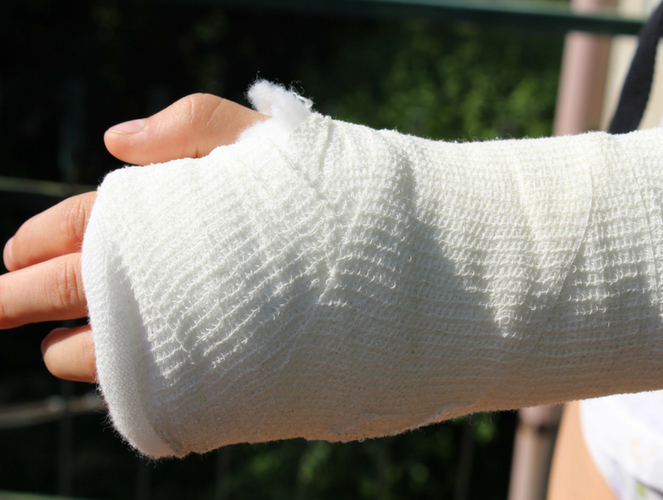
You'll have to fill in the nostril holes later and having the plaster close to the alginate is very helpful. Try to push the plaster strips into the crannies of the alginate as much as possible, especially around the nose. You want to support the alginate as much as possible while still leaving nostril holes for the castee to breathe. Use smaller strips to cover the nose area. Cover all the alginate with strips of plaster, until you can't see any alginate blue through it. Take a plaster strip, dunk it in the water, squeeze out any excess, and lay it on the alginate. Each helper should have a shallow bowl with a bit of water in it. If you didn't cut up any plaster strips before you started, you can do it now - your castee will just have to spend a little more time underneath. You'll have a tiny amount of warning when it's going to set up, the consistency starts to get more cottage-cheesy, at which point you have between 30 and 60 seconds left.

Finally, remember that you have limited time, and that it is better despite everything to get the whole face covered even if it's a little uneven, than to get a perfect nose and eyes and have it set up before you can do the rest. A good breakdown of responsibility between the two gloopers was to have one focus on the nose and eyes, and the other just slop the gloop everywhere else and keep picking it back up as it fell down. It will try to fall into the castee's ears, as well this isn't dangerous as it won't go into the ear canal without being pushed, but it makes a lot of people twitchy so prevent this if you can. Push the gloop as close to the hairline as you can, especially at the center front.
#CASTING PLASTER SKIN#
Little bubbles can be filled in after the mold is complete, but the skin texture will be lost so you want to do as little fixing as possible. The eyes and eyebrows are the worst culprits for air bubbles. This is difficult as there is no way to tell by feel if there are air bubbles your best bet is just to push the alginate around a lot. Try not to leave any air bubbles between the face and the alginate. Rub the alginate well into the eye cavities and eyebrows. Obviously, be very careful around the nose area, both to avoid covering the nostrils and to make sure the bottom of the nose is covered as well as possible in the alginate. Also cut some much smaller pieces, an inch or two by a quarter inch, to use in the nostril area. You need about 2-3 times as many as are in the picture. a brave volunteer! wearing an old t-shirt that can get tossed out afterwards (the castee will get very gloopy but the casters won't usually ruin their clothing)īefore getting started, cut some of the plaster-impregnated cheesecloth into strips, about an inch or two wide and three or four inches long.something to rest the mold in while you pour a cardboard box with a towel or some packing material in it works well.something to mix the powdered plaster with a power drill mixer attachment is ideal but a metal whisk will do.a couple of bowls for water, one for each helper.some plaster-impregnated cheesecloth, again from Douglas & Sturgess.three measuring cups of at least one quart capacity: one for the alginate, one for the plaster powder, and one for the water (don't get any of these materials mixed together at all until you are ready to use them).There are a couple different brands, we used Dermagel brand from Douglas & Sturgess. alginate, the stuff dentists use to cast your teeth.

Gather all your materials together as it will be difficult to get, say, another bucket when your hands are covered in alginate. Lay down a drop cloth if you have one, or ensure that all nearby porous surfaces are covered with plastic or newspaper.


 0 kommentar(er)
0 kommentar(er)
